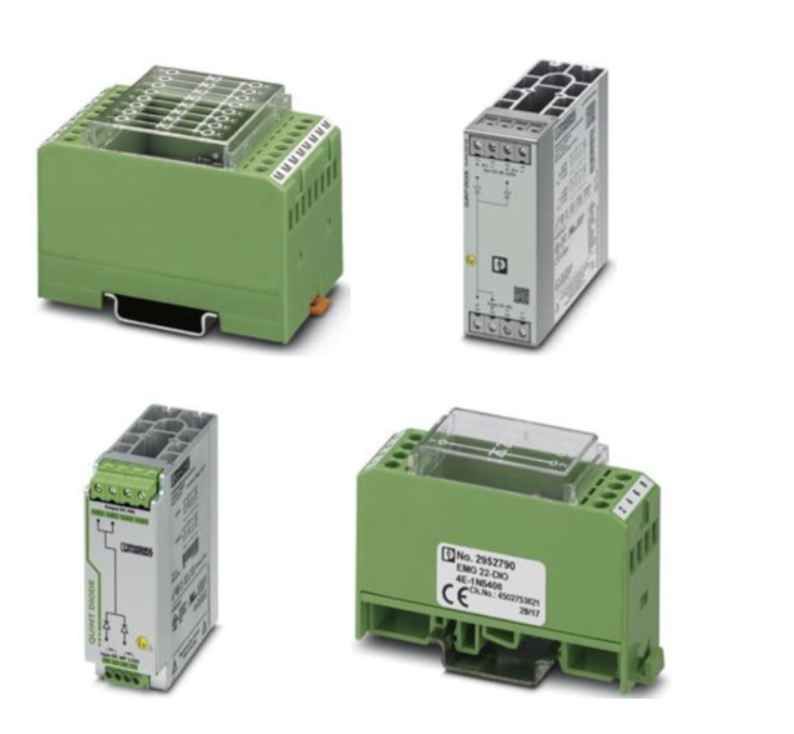Diode Modules

Diode modules are essential components in power electronics, performing critical functions such as rectification, voltage regulation, and signal modulation. Rather than using individual diodes, these functions are often handled by integrated diode modules that combine two or more power diodes into a single unit. This design allows the module to manage higher current and voltage levels with improved efficiency, reliability, and thermal performance.
RSP Supply carries a range of diode modules, including QUINT, TRIO, and STEP series options, commonly used in industrial power supplies and control systems. One of the primary applications of diode modules is rectification, where alternating current (AC) is converted into direct current (DC). In many power supply designs, diode modules serve as bridge rectifiers, delivering stable DC output suitable for downstream electronic loads.
Diode modules also play a key role in voltage regulation by helping maintain consistent output levels despite fluctuations in input voltage or load conditions. Compared to simpler circuit solutions, diode-based regulation offers improved stability and long-term reliability. These modules are widely used in industrial automation, machinery, and electrical infrastructure where dependable power conversion is required.
FAQs
Q: What are diode modules used for?
Diode modules are used for functions such as rectification, voltage regulation, and signal control in power electronic systems, particularly where higher currents and voltages are involved.
Q: Why are diodes combined into modules instead of used individually?
Combining diodes into modules improves current handling, thermal performance, and reliability, while simplifying installation and system design.
Q: What is rectification in power electronics?
Rectification is the process of converting AC power into DC power, commonly performed by diode modules configured as bridge rectifiers in power supplies.
Q: What does “RoHS compliant” mean?
RoHS compliant means the product meets the Restriction of Hazardous Substances directive, limiting the use of certain hazardous materials to support environmental and human health safety.
Q: Where are QUINT, TRIO, and STEP diode modules typically used?
These diode modules are commonly used in industrial power supplies, control panels, and automation systems that require reliable power distribution and protection.
Why Buy Diode Modules from RSP Supply
RSP Supply offers a focused selection of diode modules designed for dependable performance in industrial power applications. Our inventory includes established module series suitable for rectification and voltage regulation across a wide range of system requirements. Customers rely on RSP Supply for knowledgeable technical support and consistent access to quality power electronics components for industrial environments.

